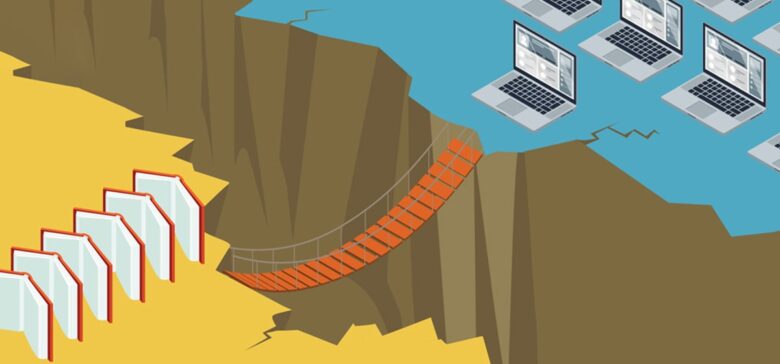In today’s world, technology has become an essential part of our lives. From education to work, most aspects of our lives are now intertwined with technology. However, not everyone has access to technology. According to a 2021 report by the Pew Research Center, around 15% of Americans don’t have access to the internet. The digital divide is not only limited to the US but is a global problem.

One of the most unfortunate impacts of digitalisation to society is the digital divide! This division is just like poverty and impacts a large number of the population of students. It is because of this divide, many of the students and the teachers are not able to access the Internet and the devices or the facilities. Because of this, they are forced to give up their studies or leave it incomplete or even teachers are forced to quit the teaching career entirely. Yes, in some parts the ratio of digital level is very low and the students are able to connect with Internet sources, but this is not as compatible as it should be for a person in the 21st century. Though there are many ways to bridge this digital divide in society, using the free learning apps is one of them. Read on as to how it helps bring in the much needed change in society to cure this problem.

- The free feature — The free learning apps doesn’t require the students to pay any amount while they are accessing various features of these applications. They can attend the lectures through these free learning apps even without attending a school or college. They can even get ready to use solutions without any payment contradictory to the paid textbooks or premiums required for other sources. Also, these applications provide them a basic access to almost all the studying and learning features which can help them cross their levels easily and without even shedding a penny in this direction.
- Enhanced Accessibility– Free learning apps play a crucial role in enhancing accessibility to education by eliminating barriers such as geographical limitations and financial constraints. These apps can be accessed on smartphones or low-cost devices, enabling users to learn anytime and anywhere. By removing the need for physical infrastructure, free learning apps bring education directly to the palms of learners, ensuring that knowledge is no longer restricted to specific locations or institutions.
- Inclusive Learning Opportunities– One of the significant advantages of free learning apps is their ability to provide inclusive learning opportunities. Traditional education may exclude certain marginalized groups, such as individuals in remote areas or those with disabilities. However, free learning apps offer a wide range of courses and resources that cater to diverse learning needs. Whether it’s language learning, vocational skills, or academic subjects, these apps empower learners to choose the topics they are interested in and study at their own pace, making education more inclusive and personalized.

- Bridging Socioeconomic Gaps– Socioeconomic disparities often contribute to the digital divide, with individuals from disadvantaged backgrounds facing limited access to educational resources. Free learning apps have the potential to bridge these gaps by providing high-quality educational content at no cost. Learners from low-income communities can access the same resources as their more privileged counterparts, enabling them to acquire knowledge and skills that can significantly impact their personal and professional growth. By leveling the playing field, free learning apps offer a pathway for socioeconomic advancement and the empowerment of underprivileged individuals.
- Lifelong Learning and Skill Development– Free learning apps promote lifelong learning and skill development, essential in today’s rapidly evolving job market. These apps offer a wide range of courses, including vocational and professional skills, which can help individuals up skill or reskill themselves. With the availability of resources in various formats, such as videos, interactive quizzes, and discussion forums, learners can engage with the content in ways that suit their learning preferences. This flexibility encourages a culture of continuous learning, enabling individuals to stay relevant and adapt to the changing demands of the modern workforce.
- Helps in building digital skills — The free learning applications not only educates the students on how to study for their examinations at that particular level, but they also help in building their digital skills. It is because of the digital divide, that most of the students are not aware of artificial intelligence or online mock tests for online lectures. These free applications provide them with all these features, and now they are aware of them and hence utilise these mediums for other sources as well.
- The unlimited world of learning — The free applications also provide different links in them. It is because of these links that the students get access to additional data and information of the subject they are studying in these apps. They can follow up the link to solve various quizzes and trivia on the subject that makes them aware of some new information and also enhances their learning experience.

Concluding the benefits of using the free learning apps to bridge the gap between digital divide, we can say that these applications are rich sources of information for the deprived part of society. The students can download the free learning apps without any charges from play store or apple store and
then access them to learn whatever they want convenient and hassle free manner. Being free doesn’t make these applications any less than the paid ones. Each and every feature of these applications are carefully curated for the requirements of the students and also add to the benefit of using them for studying. Efforts from governments, organizations, and individuals are required to ensure that free learning apps reach those who need them the most and maximize their positive impact on bridging the digital divide.

